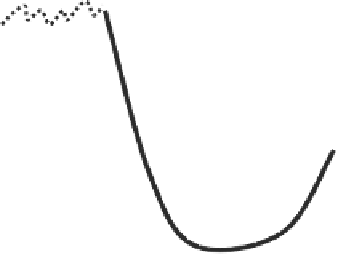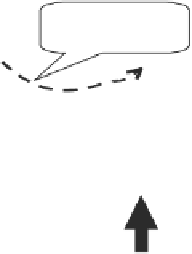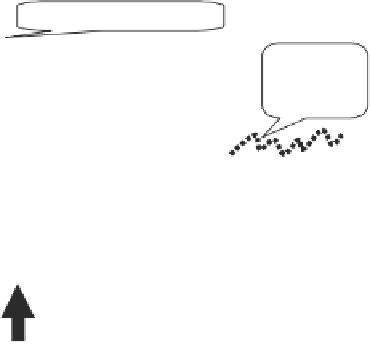Agriculture Reference
In-Depth Information
Q1. Avoid deforestation
Q4. Increase
steady state
tree cover
Q2. Deflect
forest degradation
Q3. Speed up
rehabilitation of
degraded lands
Time
Strategic intervention points
Fig. 20.1
The overall pattern of loss of natural forest followed by the increase of farmer-grown
or forester-managed tree plantations, variously described as a 'U curve', 'inverse J' or inverted
Kuznets curve ('it has to become bad before it can become better')
1.
Terminology
issues linked to the legal status of land, restricting
access to land
or the right to plant and benefit from trees (SFM Criterion 7)
2. Access to
planting material of good quality
and proven suitability for the site
(SFM Criterion 2)
3. Management skill and know-how to produce
tree products
of the qualities rec-
ognized and appreciated in
markets
for tree products (SFM Criterion 2 and 6)
4.
Overregulation
of access to markets for farmer grown timber (SFM Criterion 7)
5.
Lack of systematic validation and reward mechanisms
for environmental serv-
ices provided on farm (SFM Criterion 1, 3, 4 and 5)
6.
Lack of a supportive legal and institutional framework
(SFM Criterion 7)
20.2
Bottleneck 1: Terminology of Forestry and Agroforestry
The word 'tree plantations' to the general public combines the generally positive
word 'tree' in association with the word 'plantations'. The use of the word 'planta-
tion' often has an emotional loading depending on the audience.
When we accept a (growing) need for agricultural and tree-based production
systems ('food and fibre') as well as for the environmental service functions gener-
ally associated with 'forest', we can still acknowledge a wide spectrum of land-
scape level configurations that potentially meet these demands (Fig. 20.2). These





















Search WWH ::

Custom Search